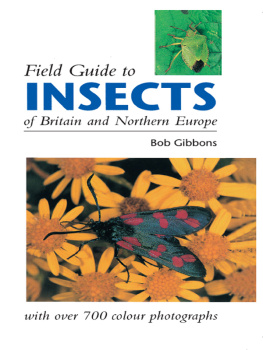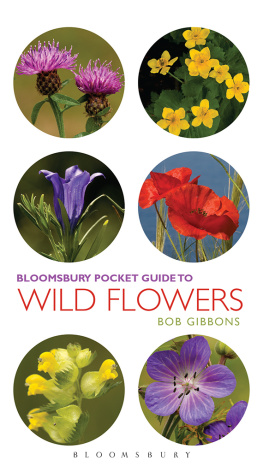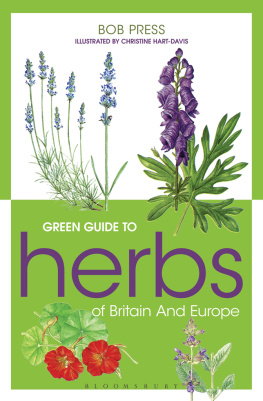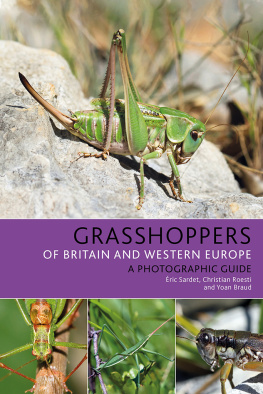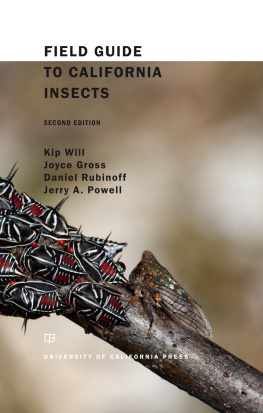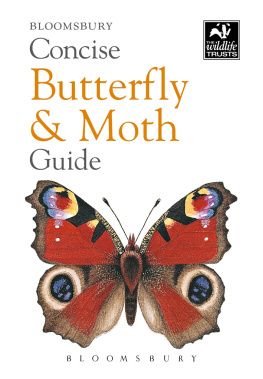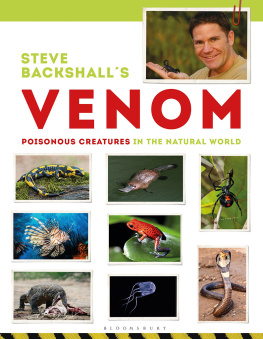Gibbons - FIELD GUIDE TO INSECTS OF BRITAIN AND NORTHERN EUROPE
Here you can read online Gibbons - FIELD GUIDE TO INSECTS OF BRITAIN AND NORTHERN EUROPE full text of the book (entire story) in english for free. Download pdf and epub, get meaning, cover and reviews about this ebook. publisher: Crowood, genre: Religion. Description of the work, (preface) as well as reviews are available. Best literature library LitArk.com created for fans of good reading and offers a wide selection of genres:
Romance novel
Science fiction
Adventure
Detective
Science
History
Home and family
Prose
Art
Politics
Computer
Non-fiction
Religion
Business
Children
Humor
Choose a favorite category and find really read worthwhile books. Enjoy immersion in the world of imagination, feel the emotions of the characters or learn something new for yourself, make an fascinating discovery.
FIELD GUIDE TO INSECTS OF BRITAIN AND NORTHERN EUROPE: summary, description and annotation
We offer to read an annotation, description, summary or preface (depends on what the author of the book "FIELD GUIDE TO INSECTS OF BRITAIN AND NORTHERN EUROPE" wrote himself). If you haven't found the necessary information about the book — write in the comments, we will try to find it.
FIELD GUIDE TO INSECTS OF BRITAIN AND NORTHERN EUROPE — read online for free the complete book (whole text) full work
Below is the text of the book, divided by pages. System saving the place of the last page read, allows you to conveniently read the book "FIELD GUIDE TO INSECTS OF BRITAIN AND NORTHERN EUROPE" online for free, without having to search again every time where you left off. Put a bookmark, and you can go to the page where you finished reading at any time.
Font size:
Interval:
Bookmark:
First published in 1995 by The Crowood Press Ltd, Ramsbury, Marlborough, Wiltshire, SN8 2HR
www.crowood.com
This e-book edition first published in 2011
Text, Bob Gibbons 1995
All rights reserved. This e-book is copyright material and must not be copied, reproduced, transferred, distributed, leased, licensed or publicly performed or used in any way except as specifically permitted in writing by the publishers, as allowed under the terms and conditions under which it was purchased or as strictly permitted by applicable copyright law. Any unauthorised distribution or use of this text may be a direct infringement of the authors and publishers rights, and those responsible may be liable in law accordingly.
ISBN 978 1 84797 369 6
Artwork by Christine Hart-Davies
Photographic Acknowledgements
Photographs supplied by Natural Image. All taken by Bob Gibbons and Peter Wilson except for those below. Each photograph is referenced by a page number followed by a number indicating its position on the page working from left to right and top to bottom, David Element .

A comman ichneumon wasp, the Yellow Ophion.
This book is intended as an introduction to the marvellous range of insects to be found in Britain and adjacent parts of north Europe (see map for area of coverage). No single portable volume can possibly cover the full range of insects that occur within this area, and this book is highly selective in the insects that it includes. Although the whole range of insect orders is covered, within this framework I have selected examples that have one or more of the following features:
They are readily noticed by the average naturalist, either singly or en masse. This includes species that may be noticeable by some aspect other than simply their visible adult stage. For example, some larvae are especially noticeable (even though their adult phase may be drab or inconspicuous); some insect products are especially noticeable, such as the froth, known as cuckoo spit produced by froghopper nymphs; and occasionally insects may be more noticeable by their sound than by their appearance, such as house crickets. As far as possible, it is the conspicuous feature that has been illustrated, since this is what people notice most.
They are reasonably frequent and widespread. There are a few exceptions to this, where particularly distinctive insects are involved; or within the key groups of Odonata (dragonflies and damselflies), butterflies, and Orthoptera (grasshoppers and crickets), where we have aimed to include all UK species, and most NW European species, whether they are common or rare.
They are identifiable in the field. In practice, this is not as simple as it sounds, since many apparently distinctive species have a number of close relatives that differ only in minor characteristics. In these cases, it is the group of species that is distinctive and identifiable, and this is usually made clear in the text. Apart from the main groups of larger insects, most groups of insects require specialized texts and detailed study for their certain identification. Some of the more appropriate specialized guides are listed in the Bibliography.

The black line delineates the main area covered by this book.
When using the book to try to identify an insect, ideally you should have the book there at the time; it is designed to be portable, and used in the field. It is surprisingly easy to see an insect that appears to be highly distinctive at the time and to find, on later examination of illustrations, that there are several similar-looking species. It can then be very difficult to recall which key features your insect possessed!
If you already know which order the insect belongs to, it is a quick process to flick through the pictures to see if there is anything like it. If so, check the timing and distribution to see if its occurrence is likely, then read the similar species to see if anything fits better. If you are uncertain where the insect fits into the scheme of things, you can use the illustrated key to the main groups of adult insects. For this, you need to be able to see the details clearly; it can be helpful to catch the insect and examine it in a clear container, releasing it afterwards. Alternatively, you can scan through the photographs in the whole book, leaving aside groups to which the insect obviously does not belong. For example, if you had a stonefly, it would be readily obvious that it was not a butterfly, dragonfly, grasshopper or cricket, even though you had no idea what it actually was. Once narrowed down, the procedure is the same as above.
The layout of each species description follows a roughly constant pattern, though this is necessarily altered at times, according to the type of insect.
If the whole description is preceded by the symbol  , this denotes that the insect does not normally occur in the UK. This speeds up the process of checking through possibilities if you are working within the UK.
, this denotes that the insect does not normally occur in the UK. This speeds up the process of checking through possibilities if you are working within the UK.
This is followed by the English name, where there is one. Many insects are not well enough known to have an English name, and in such cases the description starts with the scientific name, in italics. In a few instances, where the name has been changed recently and the old one was familiar, alternative scientific names have been given.
Next comes a description of the insect, beginning with a general indication of size, shape, colour and key anatomical features, particularly mentioning any variations from the illustrated type and highlighting features which need close examination.
The section beginning Habitat describes the habitats in which the insect commonly occurs, indicating any differences between countries, and especially differences between the UK and mainland Europe, if appropriate. (It is surprising how often such differences exist.) This section can only be a guide, as many insects occur in too wide a spectrum of habitats to mention them all, and others such as larger dragonflies and butterflies can range widely through almost any habitat, if only in passing.
The part of the description beginning Status and distribution indicates the rough distribution of the insect, and its relative abundance. Where appropriate, the UK distribution is described separately. The terms used, in order of decreasing abundance, are: abundant, common, frequent, local and rare, qualified as necessary, though they should only be taken as a guide, and there can be enormous annual variations with some insects. There are also many species for which this information is simply not fully available.
The abbreviation Season indicates the period when the insect is most likely to be seen. Unless otherwise qualified, it refers to active adults. There is a good deal of potential variation within this, according to geographical location, the weather in a particular year, and the habits of individual species. Generally species appear earlier and survive later in warmer places: in the UK, coastal south-western areas are especially mild, and on the Continent, the W coast of France, and southern areas in general, are the warmest. A mild frost-free autumn may extend the flight period of many summer insects well into November. Some insects, especially aquatic ones, may remain adult all year, but they become less active, or totally inactive, in cold weather; in these cases, only the period during which they are most likely to be seen are given.
Font size:
Interval:
Bookmark:
Similar books «FIELD GUIDE TO INSECTS OF BRITAIN AND NORTHERN EUROPE»
Look at similar books to FIELD GUIDE TO INSECTS OF BRITAIN AND NORTHERN EUROPE. We have selected literature similar in name and meaning in the hope of providing readers with more options to find new, interesting, not yet read works.
Discussion, reviews of the book FIELD GUIDE TO INSECTS OF BRITAIN AND NORTHERN EUROPE and just readers' own opinions. Leave your comments, write what you think about the work, its meaning or the main characters. Specify what exactly you liked and what you didn't like, and why you think so.

